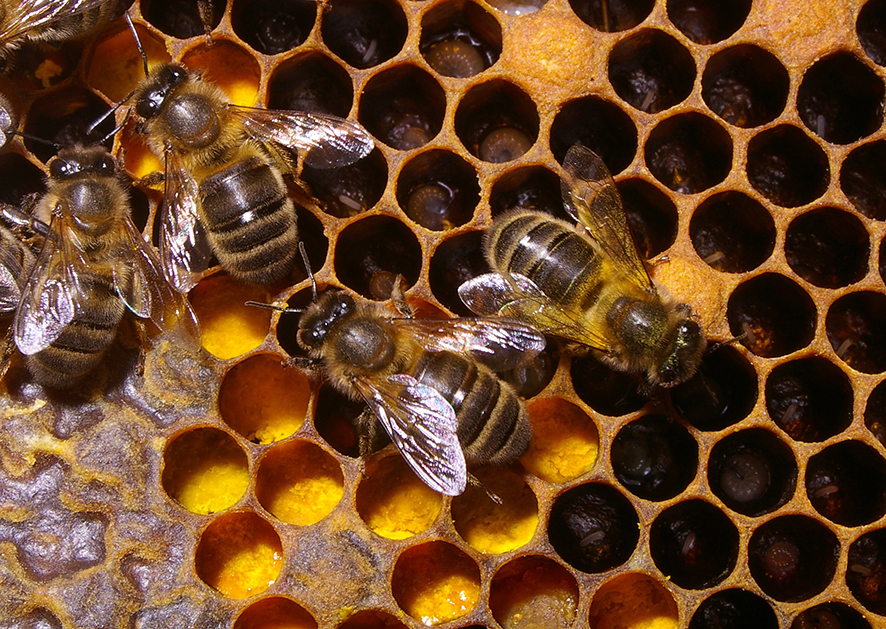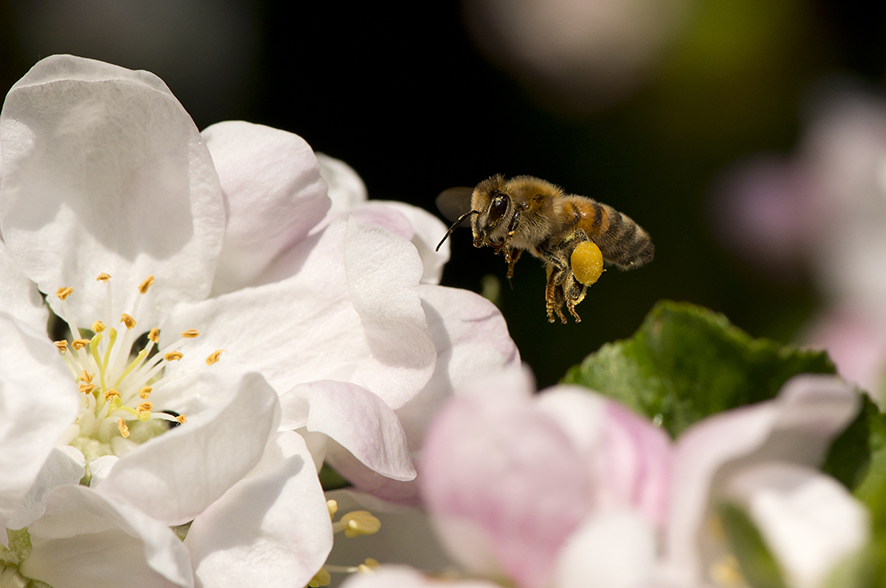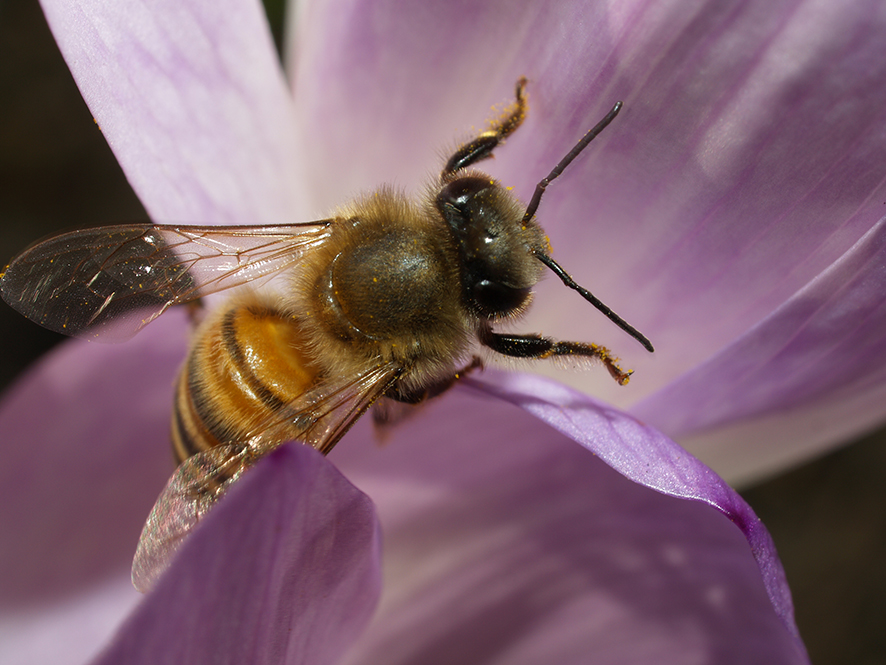Honey bee
The queen is an egg-laying machine
The honey bee is a social insect, and just like ants and termites, it lives in a society where each individual contributes to the society's survival. The central figure in the bee family is the queen. She is the only one who lays eggs, and therefore is the mother of all the bees in the family. She lays two kinds of eggs, and can lay 2,000 eggs a day. Fertilised eggs develop into females (workers) and unfertilised eggs become males. New queens are developed from the same kind of eggs as the workers, but the queen larvae are fed with a special food called ”royal jelly”.

Dancing females and lazy males
The males have an easy life. They make a small contribution to provide ventilation to the hive when it is hot, but otherwise they fly out to special mating grounds, where they wait for their queen to show up. The females, known as workers, toil away throughout the whole of their short lives. The workers have different tasks, depending on their age. The youngest bees look after the brood and the queen, then they can become construction workers and help build honey-comb, soldiers who defend the home and finally become collectors, who are sent in search of nectar and pollen. To make the collection as efficient as possible, the bees have developed a special bee dance.
The dancing bee dances around in circles, swinging the abdomen out and distributes tasters. In this way, it can tell its sister bees about the direction and distance to the best places with nectar. According to recent research, bees that have discovered any danger close to a good feeding site can stop the dancing bees in the hive by pushing them with their head, as they emit a short beeping sound. This prevents the other bees from flying to a dangerous place. The collected nectar is converted into honey, the bees’ food storage. The bees spend the winter by gathering in a dense clump inside the hive. If you take honey from the bees, it should be replaced with sugar water to make sure the bees do not die of hunger during the winter months.

Pollination, honey and wax
The honey bee is a valuable livestock in the Danish nature. Before it was discovered that it was possible to extract sugar from beets, sugar cane, etc., honey was one of the only sweeteners known to man. Therefore, for many centuries, people have looted the wild honeybee’s home to get honey and beeswax. By keeping bees in a specially designed home or beehive, you can get to the honey much more easily. Today the bee’s impact on the fertilization of, e.g. orchards and rape fields is of great importance for the crop yield.
Fact
The Honey bee is about 10mm long and has an abdomen with brown and yellow/gold stripes. The hind legs have some hair where pollen can get stuck like small yellow baskets. Worldwide, there are eight species of honeybee, of which only the common honeybee is found in Denmark. Here the honeybee has three races: Italian (yellow) bees, (grey) and the Buckfast bee. In addition, the subspecies of the brown honey bee can be found on the Danish island of Læsø. Originally honey bees lived in hollow trees, but now virtually all honey bees are kept in hives.


